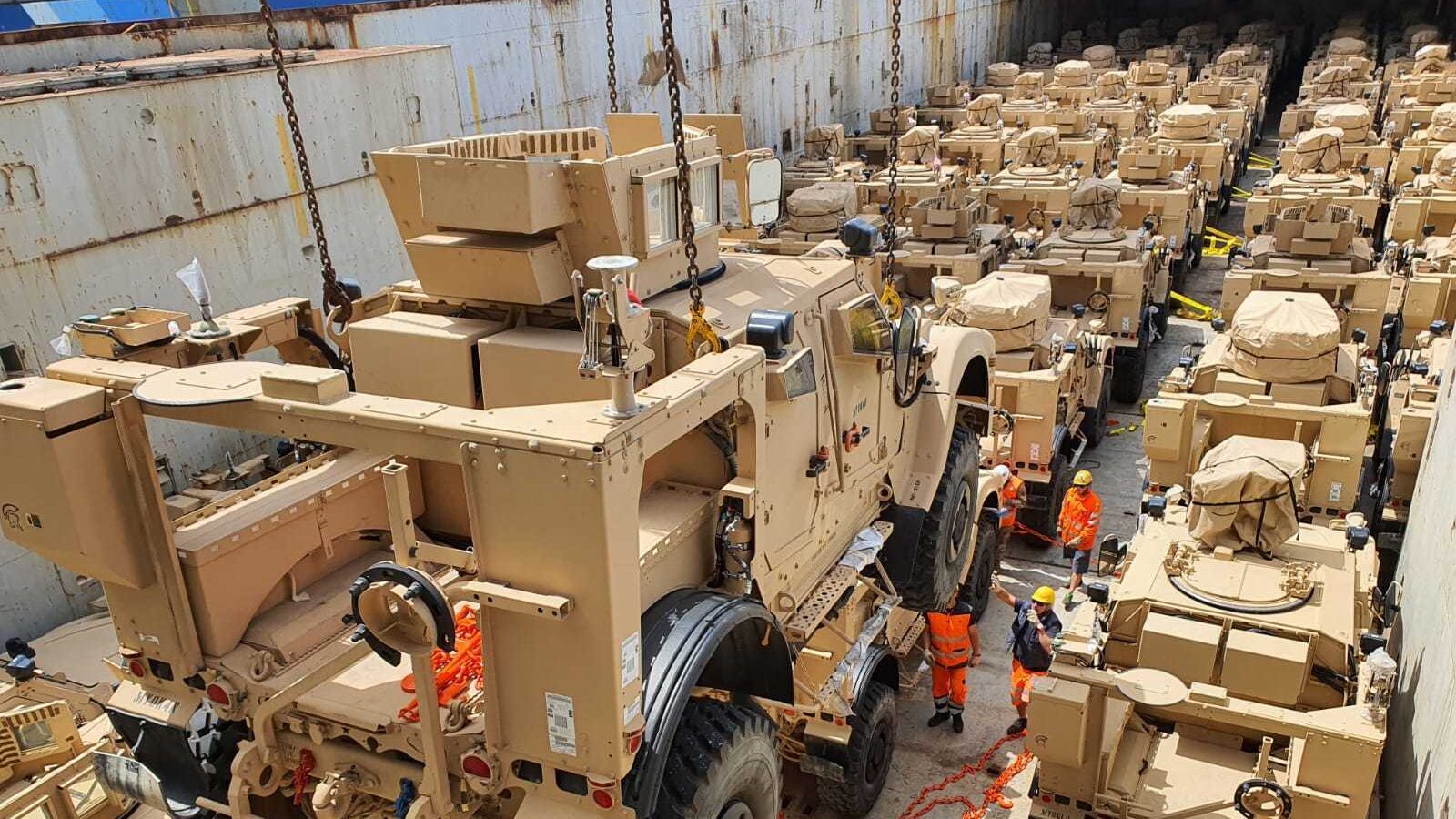
A Mine Resistant Ambush Protected All Terrain Vehicle, or M-ATV, is lowered into the hull of the Ocean Giant cargo vessel at the Port of Livorno in Italy. (U.S. Army photo courtesy of the 839th Transportation Battalion)
NDIA TACTICAL WHEELED VEHICLES CONFERENCE: The US Army wants to help industry manage its supply chain risk as the military becomes increasingly concerned about vulnerabilities among its suppliers and their subcontractors, a senior army official said today.
Timothy Goddette, deputy assistant secretary of the Army for acquisition, logistics and technology, said the Army would release interim policy guidance in the third quarter of fiscal 2022 aimed at mitigating supply chain risk alongside industry.
“My message to you all is I think the government needs to help you not manage your supply chain, but we have to have discussions about where the risk is so that we can help where we can help,” Goddette told an audience at the National Defense Industrial Association’s Tactical Wheeled Vehicle conference.
The guidance will help to create a new framework to identify, assess, mitigate and monitor risk to its supply chains.
“We must manage supply chain risk early in a weapons system’s life cycle, to prevent or reduce risk before we field a System and to ensure its affordable,” a slide in Goddette’s presentation stated.
The presentation said that alongside the interim policy guidance, the service would conduct five pilot programs in the next year “that will apply the best of breed Supply Chain Risk Tools and assess the skills, knowledge and abilities needed to transform our logisticians and other personnel.” The service is also working with Defense Acquisition University on courses focused on supply chain risk management.
The US military in general is concerned about supply chain risk, especially for key components for weapons systems, such as rare earth elements and microelectronics, both of which have supply chains that run through China.
A report late that year from the Reagan Institute warned that the US military’s supply chains were “exceedingly fragile” and that the US needs a “manufacturing renaissance” amid intensifying relations with China.
“When you start to look at some of the other challenges that we have — you’ve heard batteries, microelectronics, chemicals, raw materials,” Goddette said. “The Army, and DOD for that matter, does not necessarily control some of those commodities. We’re not the driver, right? We accept the large investment that industries making throughout the rest of the nation, as well as globally. We’ve got to be smart about how we how we measure that risk.”
According to Goddette, the service already uses commercial-off-the-shelf tools to assess and illuminate supply chain risk “when possible.”
The new supply chain risk management from the Army is one of several ongoing efforts within the US military aimed at addressing supply chain worries.
The Defense Department added another supply chain risk management effort, called the Supply Chain Resiliency Working Group in September last year in the undersecretary of defense for acquisition and sustainment’s office.
Related to supply chain resiliency, the Pentagon has also focused on shoring up cybersecurity for its industrial base. One of the most public efforts, the Cybersecurity Maturity Model Certification, is aimed at shoring up the cybersecurity defenses of the Pentagon’s industrial base, which includes 300,000 companies.
Speaking to reporters last month, Doug Bush, the assistant secretary of the Army for acquisition, logistics and technology, and Goddette’s boss, said that the Army needed to take security overall more seriously in general.
“We’ve got to get back to habits we had during the Cold War as far as keeping ourselves more secure against a sophisticated enemy, and that applies both cyber and supply chain in particular my world,” Bush said. “And both are ongoing efforts. We’re going to have to keep an eye on those and I will emphasize those.”
Sullivan says Ukraine supplemental should cover all of 2024, long-range ATACMS now in Ukraine
“We now have a significant number of ATACMS coming off their production line and entering US stocks,” Jake Sullivan said today. “And as a result, we can move forward with providing the ATACMS while also sustaining the readiness of the US armed forces.”


























